Abstract
1. The effect of adenosine on left ventricular contractility and developed tension was studied in the anaesthetized intact dog. Normal and propranolol-treated animals were used. Adenosine was infused through a catheter into one of the two main branches of the left coronary artery, usually the circumflex branch. The rate of infusion was 150 × 10-9 M/min. The infusion was maintained during 50 min.
2. In both series of animals, no change was observed in the heart rate, aortic pressure, left ventricular end-diastolic pressure, time from onset of left ventricular contraction to peak dP/dt, peak dP/dt and left ventricular tension—time index. It is concluded that a regional increase in adenosine concentration in the left ventricular wall has no inotropic effect when the adrenergic mechanisms are normal or depressed.
3. The myocardial blood flow response to adenosine was determined at the 10th, 30th and 50th min of the infusion by the radioactive inert gas method. At the 10th min of the infusion, the myocardial blood flow averaged three times the control value in both series of dogs. Thereafter, the flow response remained stable in the normal dogs but declined at the 50th min of the infusion in the propranolol-treated animals. It is suggested that autoregulation of the coronary circulation in response to overperfusion of the myocardium at constant cardiac work may be enhanced at the lower myocardial oxygen requirements of the propranolol-treated dogs while, in the normal animals, it was insufficient to overcome the potent coronary dilator action of adenosine.
Full text
PDF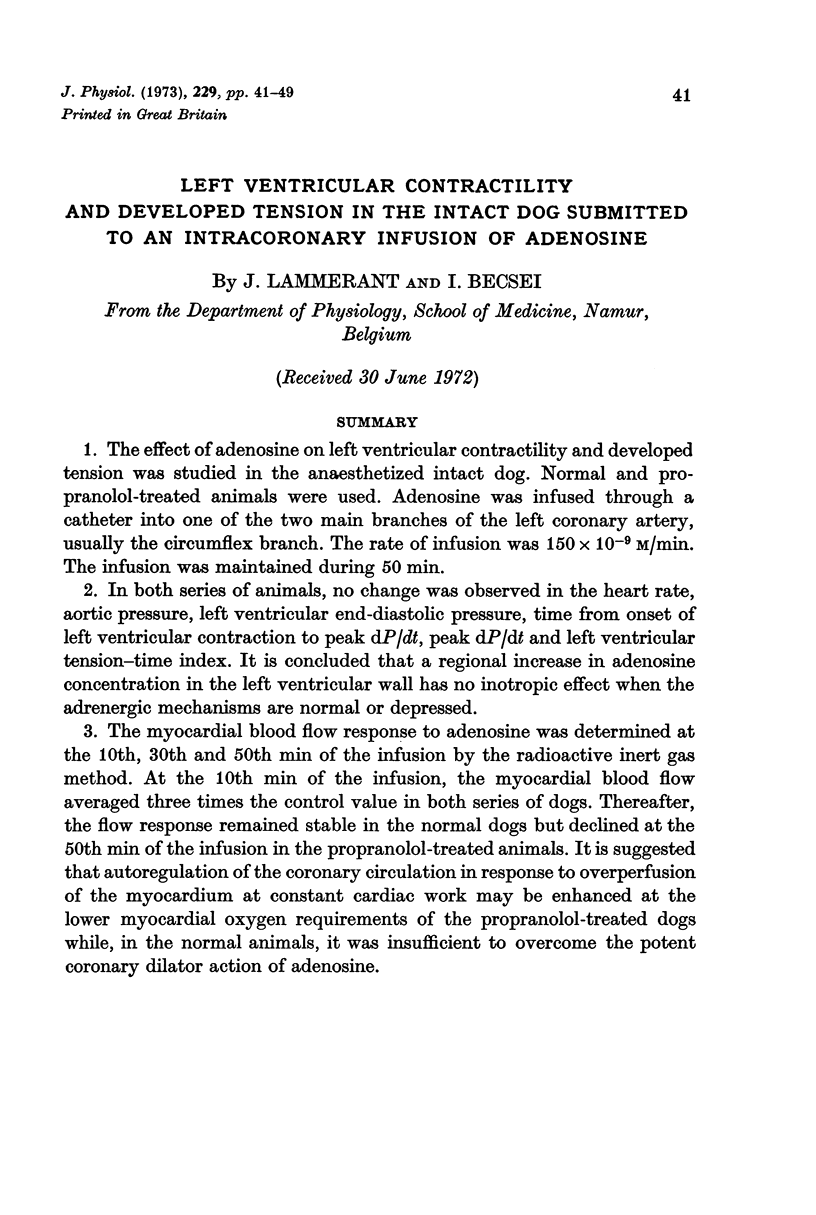
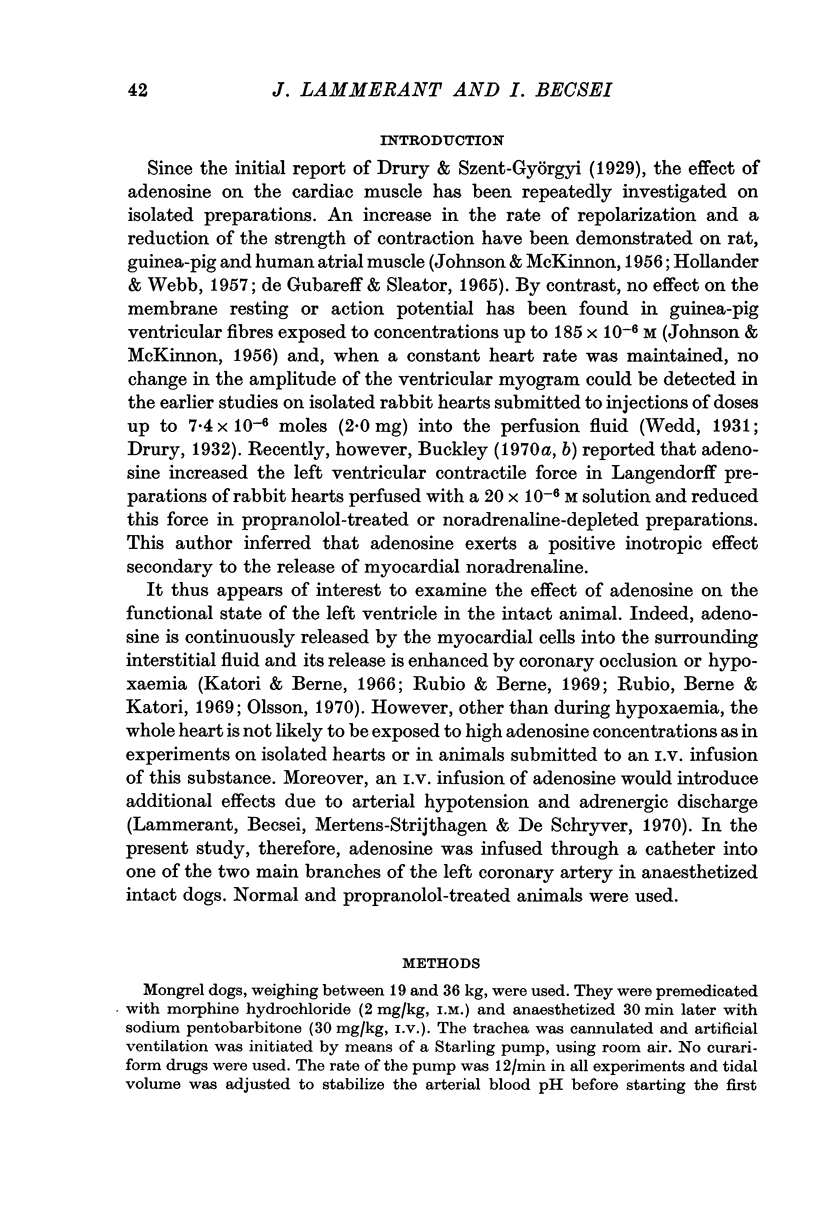
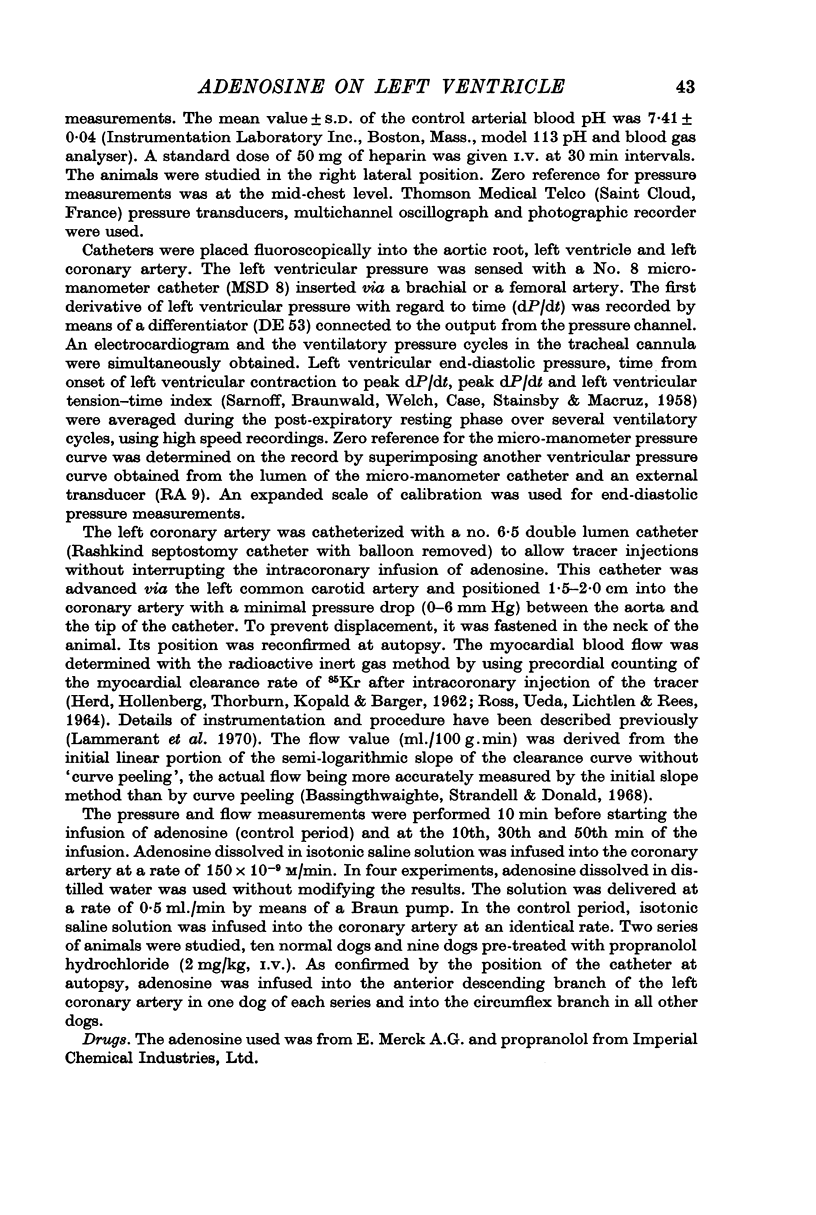
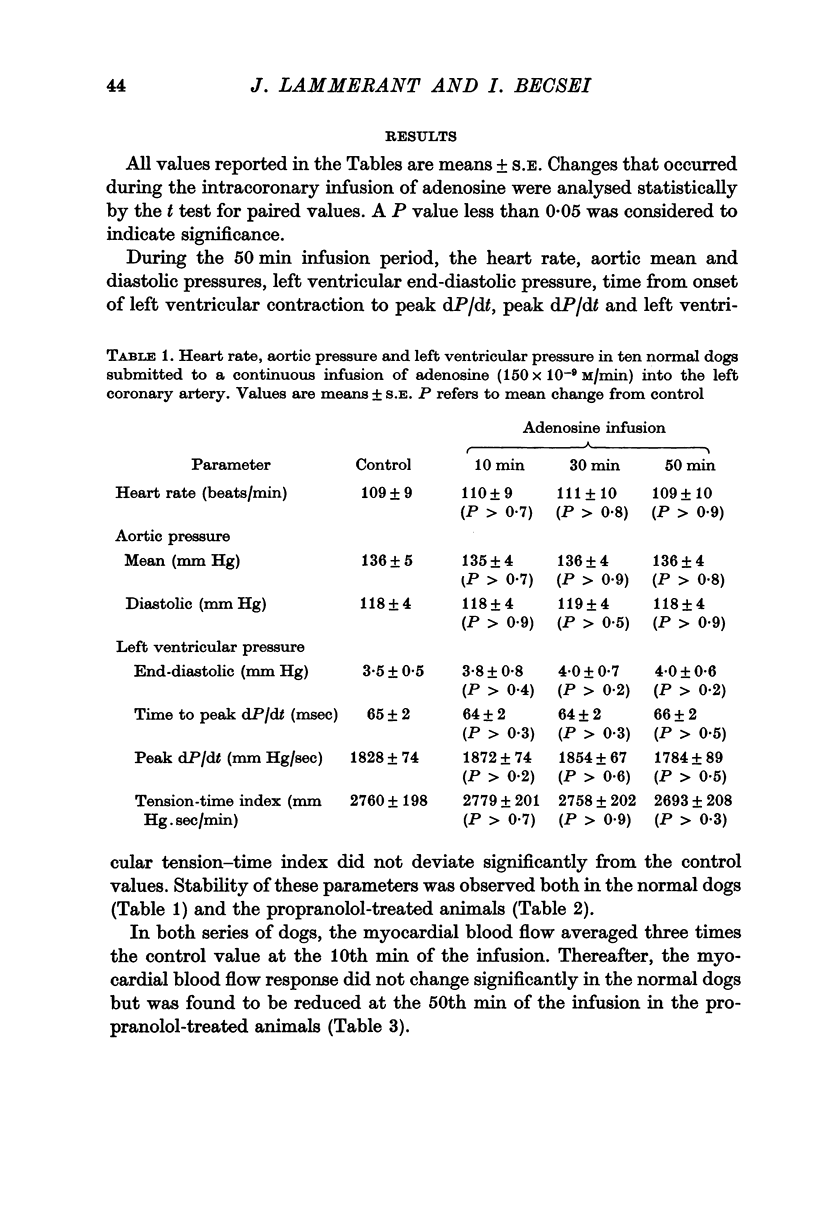
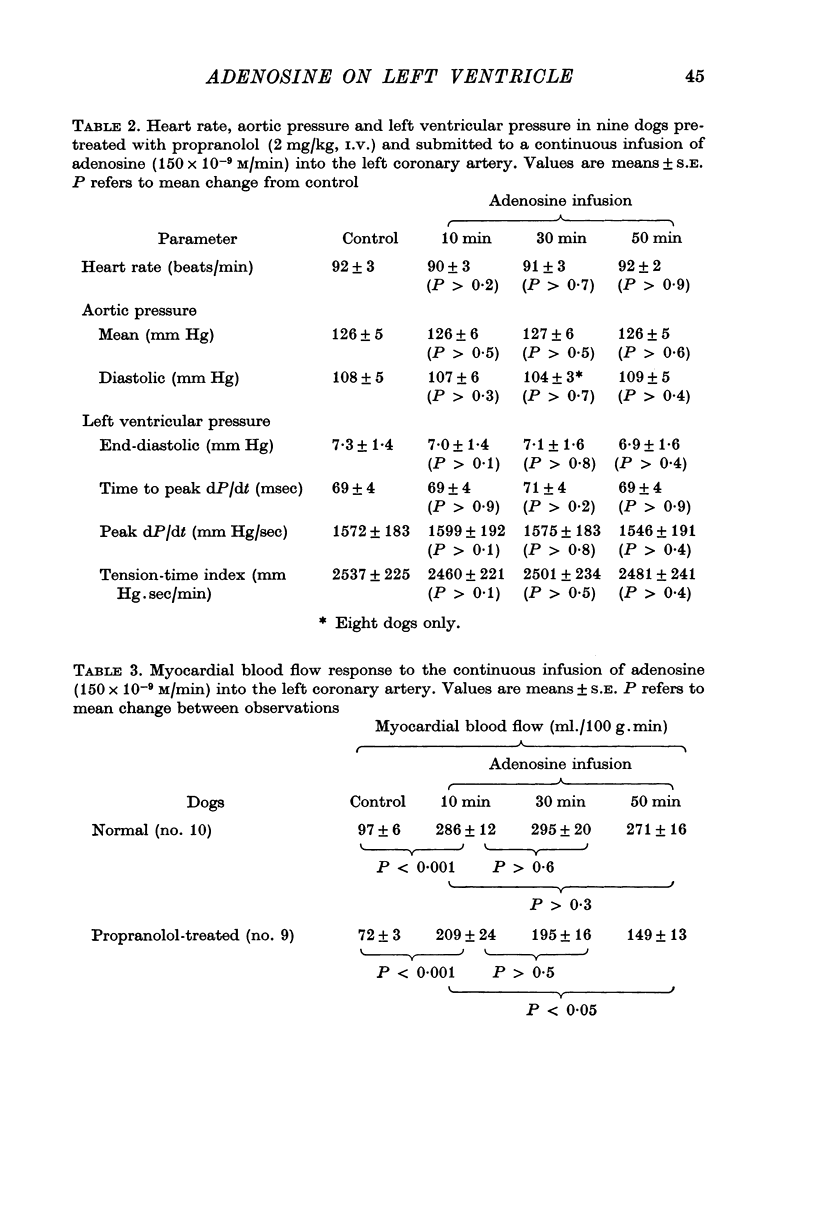
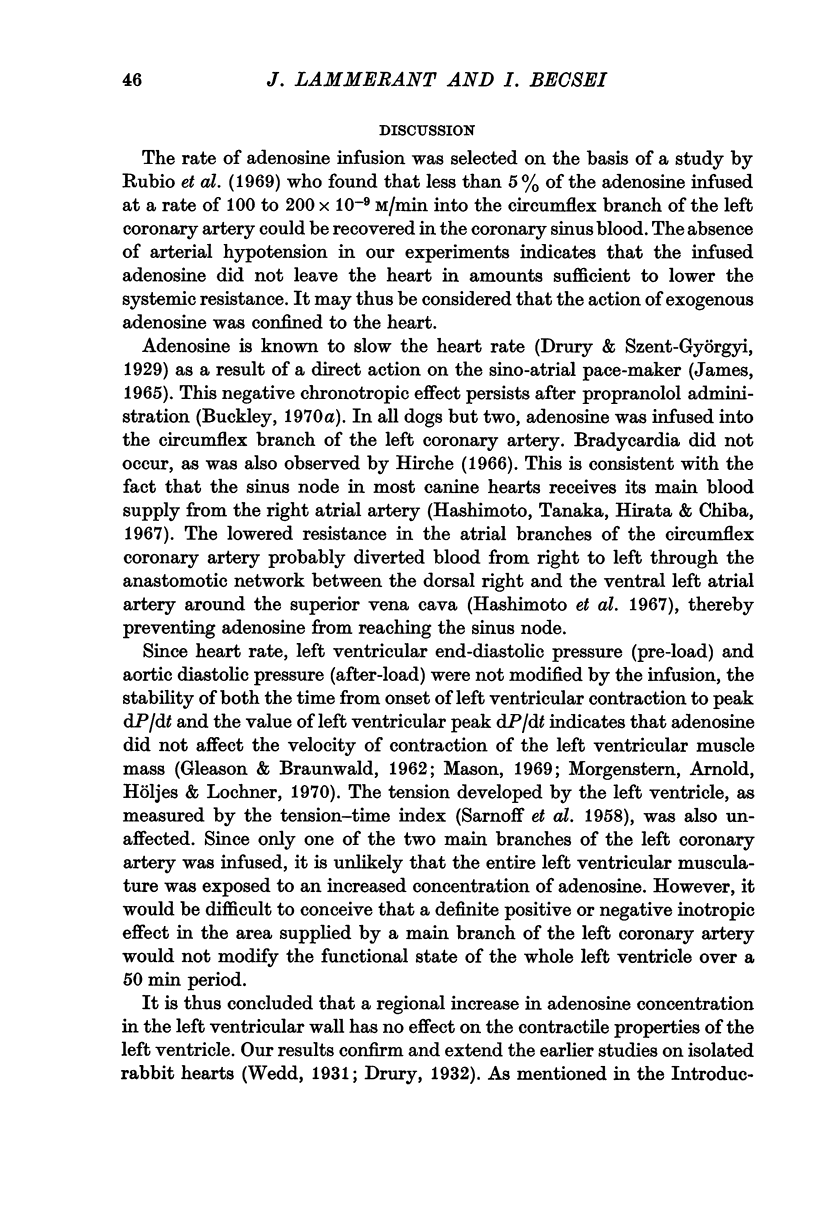
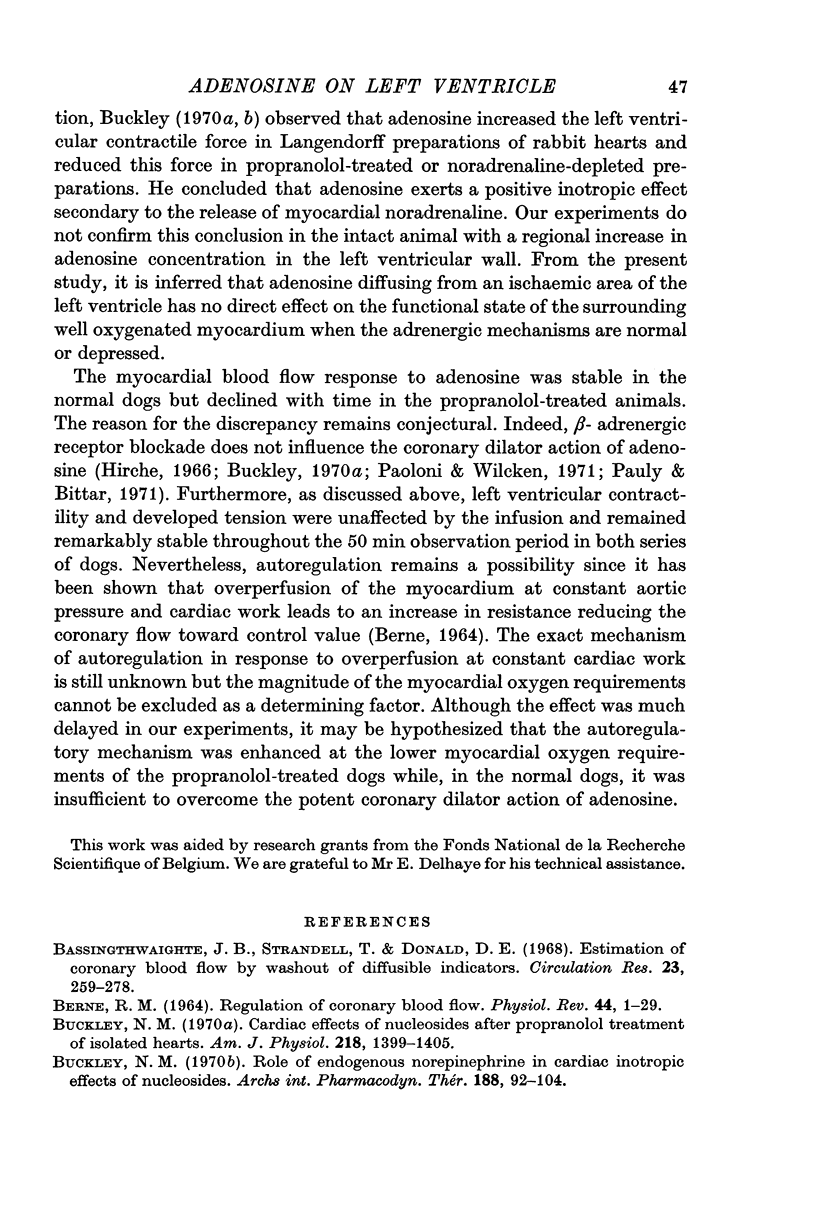
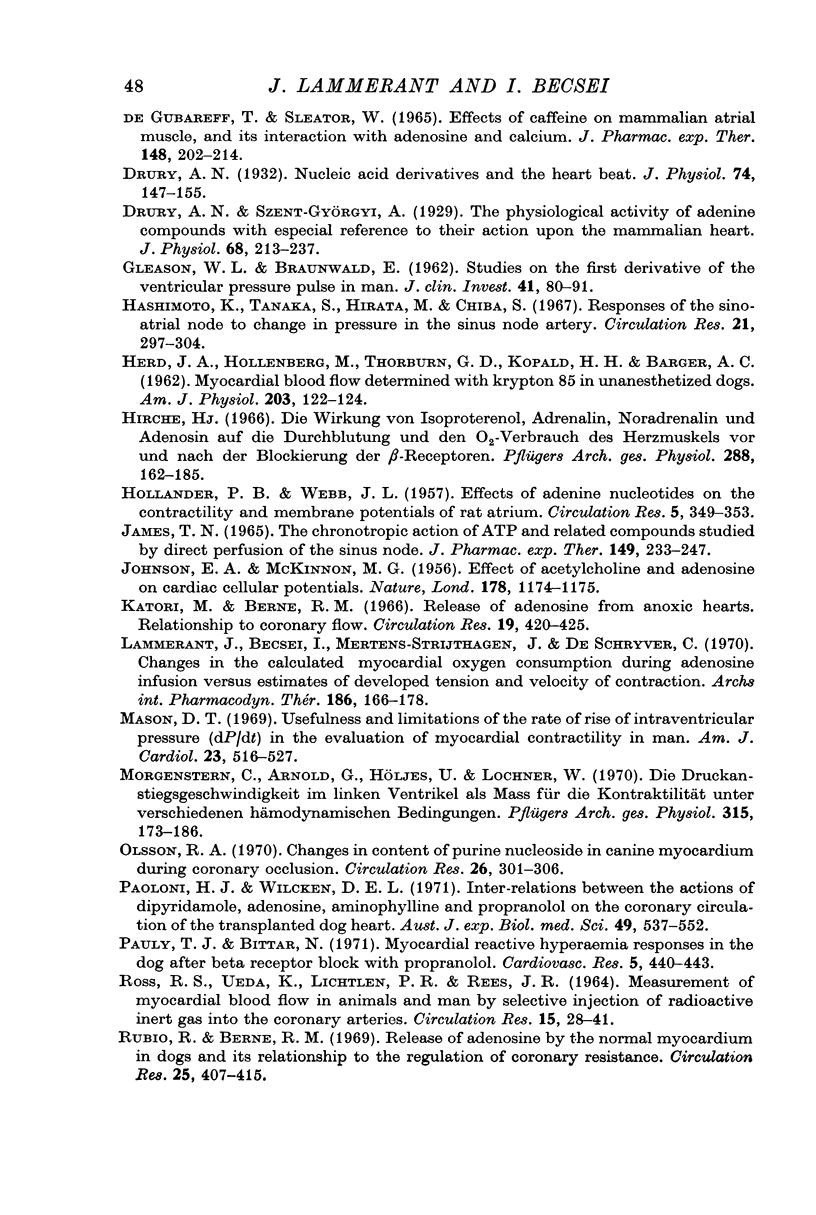
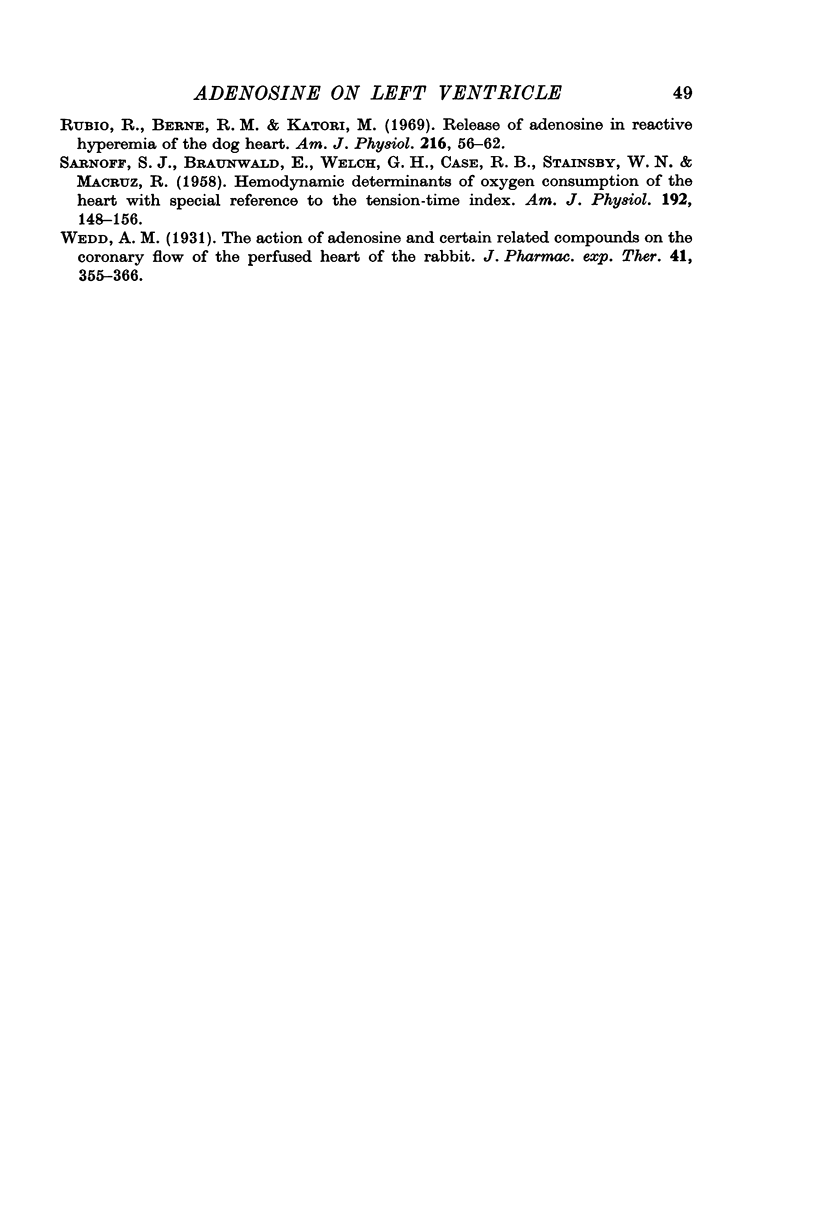
Selected References
These references are in PubMed. This may not be the complete list of references from this article.
- BERNE R. M. REGULATION OF CORONARY BLOOD FLOW. Physiol Rev. 1964 Jan;44:1–29. doi: 10.1152/physrev.1964.44.1.1. [DOI] [PubMed] [Google Scholar]
- Bassingthwaighte J. B., Strandell T., Donald D. E. Estimation of coronary blood flow by washout of diffusible indicators. Circ Res. 1968 Aug;23(2):259–278. doi: 10.1161/01.res.23.2.259. [DOI] [PMC free article] [PubMed] [Google Scholar]
- Buckley N. M. Cardiac effects of nucleosides after propranolol treatment of isolated hearts. Am J Physiol. 1970 May;218(5):1399–1405. doi: 10.1152/ajplegacy.1970.218.5.1399. [DOI] [PubMed] [Google Scholar]
- DEGUBAREFF T., SLEATOR W., Jr EFFECTS OF CAFFEINE ON MAMMALIAN ATRIAL MUSCLE, AND ITS INTERACTION WITH ADENOSINE AND CALCIUM. J Pharmacol Exp Ther. 1965 May;148:202–214. [PubMed] [Google Scholar]
- Drury A. N. Nucleic acid derivatives and the heart beat. J Physiol. 1932 Feb 8;74(2):147–155. doi: 10.1113/jphysiol.1932.sp002834. [DOI] [PMC free article] [PubMed] [Google Scholar]
- Drury A. N., Szent-Györgyi A. The physiological activity of adenine compounds with especial reference to their action upon the mammalian heart. J Physiol. 1929 Nov 25;68(3):213–237. doi: 10.1113/jphysiol.1929.sp002608. [DOI] [PMC free article] [PubMed] [Google Scholar]
- GLEASON W. L., BRAUNWALD E. Studies on the first derivative of the ventricular pressure pulse in man. J Clin Invest. 1962 Jan;41:80–91. doi: 10.1172/JCI104469. [DOI] [PMC free article] [PubMed] [Google Scholar]
- HERD J. A., HOLLENBERG M., THORBURN G. D., KOPALD H. H., BARGER A. C. Myocardial blood flow determined with krypton 85 in unanesthetized dogs. Am J Physiol. 1962 Jul;203:122–124. doi: 10.1152/ajplegacy.1962.203.1.122. [DOI] [PubMed] [Google Scholar]
- HOLLANDER P. B., WEBB J. L. Effects of adenine nucleotides on the contractility and membrane potentials of rat atrium. Circ Res. 1957 Jul;5(4):349–353. doi: 10.1161/01.res.5.4.349. [DOI] [PubMed] [Google Scholar]
- Hashimoto K., Tanaka S., Hirata M., Chiba S. Responses of the sino-atrial node to change in pressure in the sinus node artery. Circ Res. 1967 Sep;21(3):297–304. doi: 10.1161/01.res.21.3.297. [DOI] [PubMed] [Google Scholar]
- Hirche H. Die Wirkung von Isoproterenol, Adrenalin, Noradrenalin und Adenosin auf die Durchblutung und den O2-Verbrauch des Herzmuskels vor und nach der Blockierung der beta-Receptoren. Pflugers Arch Gesamte Physiol Menschen Tiere. 1966;288(2):163–185. [PubMed] [Google Scholar]
- JOHNSON E. A., MCKINNON M. G. Effect of acetylcholine and adenosine on cardiac cellular potentials. Nature. 1956 Nov 24;178(4543):1174–1175. doi: 10.1038/1781174a0. [DOI] [PubMed] [Google Scholar]
- James T. N. The chronotropic action of ATP and related compounds studied by direct perfusion of the sinus node. J Pharmacol Exp Ther. 1965 Aug;149(2):233–247. [PubMed] [Google Scholar]
- Katori M., Berne R. M. Release of adenosine from anoxic hearts. Relationship to coronary flow. Circ Res. 1966 Aug;19(2):420–425. doi: 10.1161/01.res.19.2.420. [DOI] [PubMed] [Google Scholar]
- Lammerant J., Becsei I., Mertens-Strijthagen J., De Schryver C. Changes in the calculated myocardial oxygen consumption during adenosine infusion versus estimates of developed tension and velocity of contraction. Arch Int Pharmacodyn Ther. 1970 Jul;186(1):166–178. [PubMed] [Google Scholar]
- Mason D. T. Usefulness and limitations of the rate of rise of intraventricular pressure (dp-dt) in the evaluation of myocardial contractility in man. Am J Cardiol. 1969 Apr;23(4):516–527. doi: 10.1016/0002-9149(69)90005-8. [DOI] [PubMed] [Google Scholar]
- Morgenstern C., Arnold G., Höljes U., Lochner W. Die Druckanstiegsgeschwindigkeit im linken Ventrikel als Mass für die Kontraktilität unter verschiedenen hämodynamischen Bedingungen. Pflugers Arch. 1970;315(2):173–186. doi: 10.1007/BF00586659. [DOI] [PubMed] [Google Scholar]
- Olsson R. A. Changes in content of purine nucleoside in canine myocardium during coronary occlusion. Circ Res. 1970 Mar;26(3):301–306. doi: 10.1161/01.res.26.3.301. [DOI] [PubMed] [Google Scholar]
- Paoloni H. J., Wilcken D. E. Inter-relations between the actions of dipyridamole, adenosine, aminophylline and propranolol on the coronary circulation of the transplanted dog heart. Aust J Exp Biol Med Sci. 1971 Dec;49(6):537–552. doi: 10.1038/icb.1971.60. [DOI] [PubMed] [Google Scholar]
- Pauly T. J., Bittar N. Myocardial reactive hyperaemia responses in the dog after beta receptor block with propranolol. Cardiovasc Res. 1971 Oct;5(4):440–443. doi: 10.1093/cvr/5.4.440. [DOI] [PubMed] [Google Scholar]
- ROSS R. S., UEDA K., LICHTLEN P. R., REES J. R. MEASUREMENT OF MYOCARDIAL BLOOD FLOW IN ANIMALS AND MAN BY SELECTIVE INJECTION OF RADIOACTIVE INERT GAS INTO THE CORONARY ARTERIES. Circ Res. 1964 Jul;15:28–41. doi: 10.1161/01.res.15.1.28. [DOI] [PubMed] [Google Scholar]
- Rubio R., Berne R. M., Katori M. Release of adenosine in reactive hyperemia of the dog heart. Am J Physiol. 1969 Jan;216(1):56–62. doi: 10.1152/ajplegacy.1969.216.1.56. [DOI] [PubMed] [Google Scholar]
- Rubio R., Berne R. M. Release of adenosine by the normal myocardium in dogs and its relationship to the regulation of coronary resistance. Circ Res. 1969 Oct;25(4):407–415. doi: 10.1161/01.res.25.4.407. [DOI] [PubMed] [Google Scholar]
- SARNOFF S. J., BRAUNWALD E., WELCH G. H., Jr, CASE R. B., STAINSBY W. N., MACRUZ R. Hemodynamic determinants of oxygen consumption of the heart with special reference to the tension-time index. Am J Physiol. 1958 Jan;192(1):148–156. doi: 10.1152/ajplegacy.1957.192.1.148. [DOI] [PubMed] [Google Scholar]


